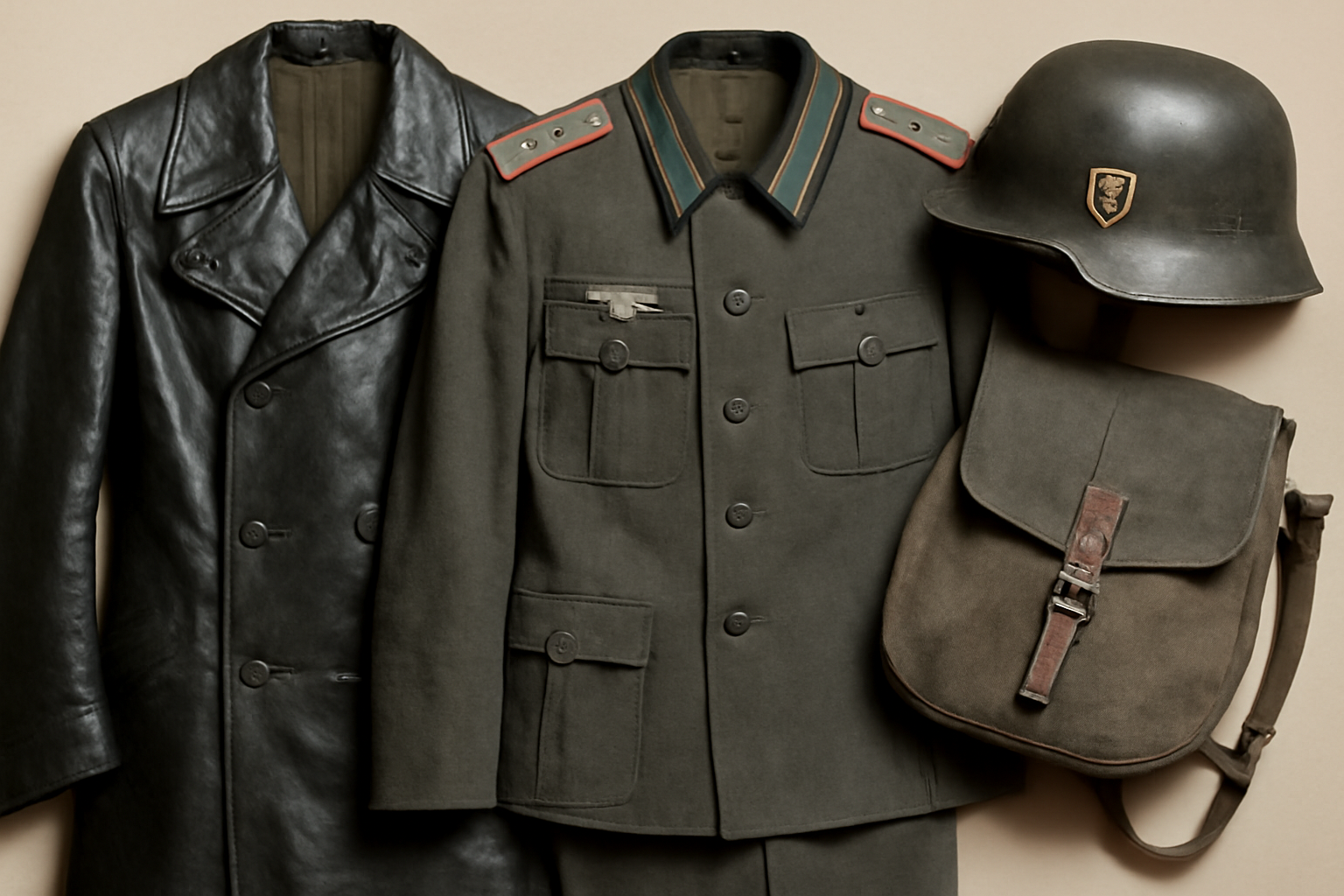
Authentic WWII German Uniform Parts & Accessories | German Trousers, Shoulder Boards, Leather Coats & More
Published on May 26, 2025
WWII German Uniform Parts & Accessories: A Comprehensive Guide for Collectors and Enthusiasts
Introduction
World War II German uniforms have fascinated historians, collectors, reenactors, and military enthusiasts for decades. These uniforms were not only functional battle attire but also a symbol of the German military’s complex hierarchy and organization. If you’re interested in building or collecting authentic WWII German uniforms, understanding the individual parts and accessories is crucial. From German trousers WW2 to detailed helmet decals and bread bags, each component holds historical significance and adds authenticity to the overall uniform.
In this guide, we’ll explore the key elements of WWII German uniforms, focusing on their parts and accessories, including shoulder boards, leather coats, trousers, and other essential gear. This article is designed to help you identify, appreciate, and source these pieces with ease.
Understanding WWII German Shoulder Boards: The Pillar of Rank Identification
One of the most recognizable features of any WWII German uniform is the shoulder board. These shoulder boards were more than mere decoration — they indicated rank, branch, and sometimes the specific unit of the wearer.
Types of WW2 German Shoulder Boards
- Infantry Shoulder Boards: Often plain with specific piping colors indicating the branch.
- Officer Shoulder Boards: More elaborate, featuring braids and metallic threads.
- Specialized Units: Shoulder boards could also reflect specialized branches like Panzer, Luftwaffe, or Kriegsmarine.
Authentic WW2 German shoulder boards were crafted with precision, and today, collectors seek genuine or carefully made replicas that match wartime specifications.
German Trousers WW2: The Foundation of the Uniform
A key piece often overlooked is the German trousers WW2 or German pants WW2. These trousers were designed for durability and comfort, made from high-quality wool or cotton blends suited for various climates.
Features of German Pants WW2
- Material: Mostly wool for winter and cotton for summer variants.
- Design: High-waisted with reinforced seams.
- Colors: Field grey (Feldgrau) was standard for army trousers; other branches had distinct color variations.
Wearing authentic German trousers adds to the overall authenticity and feel of a WWII uniform, making them a vital part of any collection.
WW2 German Leather Coat: The Durable Outerwear for Harsh Conditions
Beyond standard tunics, many German soldiers wore leather coats, especially in colder regions or during harsh winters. The WW2 German leather coat was not just a practical garment but also a symbol of elite status within certain branches, such as Luftwaffe pilots and officers.
Key Points about German Leather Coats:
- Made from thick, treated leather to protect against cold and wind.
- Often featured detailed stitching and sometimes insignia patches.
- Highly sought after by collectors due to their rarity and rugged design.
German Bread Bag WW2: The Soldier’s Essential Carry-All
No German soldier was complete without the WWII German bread bag. This small but essential accessory was designed to carry rations, personal items, and sometimes documents.
What Makes the German Bread Bag Special?
- Made from sturdy canvas or leather.
- Often marked with unit symbols or insignia.
- Practical design with compartments for easy access.
The WWII German bread bag not only adds practicality but also a touch of authenticity and historical accuracy to your uniform setup.
WW2 German Helmet Decals: Identifying Branch and Allegiance
Helmet decals were crucial in identifying a soldier’s branch and sometimes even their unit. These decals were typically applied to the sides of the famous German Stahlhelm helmet.
Common Decals Include:
- The Wehrmacht eagle.
- Branch-specific symbols like the Luftwaffe eagle or Panzer shields.
- Unit numbers or division insignias.
Maintaining the integrity of WW2 German helmet decals is important for both collectors and reenactors, ensuring that each helmet tells its own story.
Where to Find Authentic WWII German Uniform Parts & Accessories
If you’re on the hunt for genuine WWII German uniform parts such as shoulder boards, leather coats, or bread bags, it’s essential to source from reputable dealers or specialists who understand the value and history of these items.
Tips for Buying:
- Check for authenticity marks and wartime stamps.
- Avoid reproductions unless clearly marked.
- Consult experts or trusted online communities.
At Paddelaters.com, you can explore a wide selection of authentic WWII German uniform parts and accessories, all verified for quality and historical accuracy.
Conclusion
Building an authentic WWII German uniform requires careful attention to detail, from the type of German trousers WW2 to the specific style of shoulder boards and accessories like the bread bag and helmet decals. Each component tells a story and enhances the overall authenticity of the uniform. Whether you’re a serious collector or a history enthusiast, understanding these parts and their significance will enrich your appreciation and presentation of WWII German military attire.
For authentic parts and expert advice, visit Paddelaters.com — your trusted source for genuine WWII German uniform parts and accessories.
